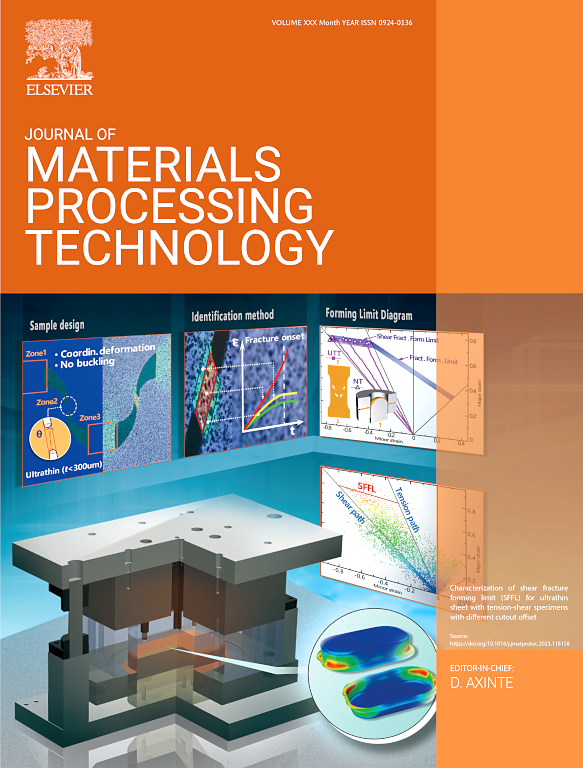Study on plasma behaviour, ablation mechanism, and surface morphology of CFRP by underwater laser-induced plasma micro-machining
IF 6.7
2区 材料科学
Q1 ENGINEERING, INDUSTRIAL
Journal of Materials Processing Technology
Pub Date : 2025-02-05
DOI:10.1016/j.jmatprotec.2025.118757
引用次数: 0
Abstract
Carbon fibre-reinforced plastic (CFRP) is an excellent non-metallic composite material with advanced mechanical properties. Laser-induced plasma micro-machining (LIPMM) is a high-quality method of processing CFRP with less thermal damage. This study explored the interaction mechanism between plasma and CFRP material at different liquid depths and laser energies. A numerical model considering heterogeneity and anisotropy was proposed to study the anisotropic heat transfer of CFRP. The relationship between the plasma plume and material ablation was also investigated. The results revealed that a considerable ablation depth was obtained with a high aspect ratio of the plasma. In addition, the influence of surface tension on bubble attachment was studied, and it was found that decreasing the surface tension of a liquid could reduce bubble attachment. Machining CFRP by LIPMM in 40 % ethanol solution can effectively reduce the bubbles on the sample surface and improve the processing quality. As the thermal conductivity of the liquid medium is greater than that of the air, the thermal damage of epoxy resin was effectively reduced. The ablation depth with LIPMM increased by about 17.5 % compared to laser process in air.
求助全文
约1分钟内获得全文
求助全文
来源期刊

Journal of Materials Processing Technology
工程技术-材料科学:综合
CiteScore
12.60
自引率
4.80%
发文量
403
审稿时长
29 days
期刊介绍:
The Journal of Materials Processing Technology covers the processing techniques used in manufacturing components from metals and other materials. The journal aims to publish full research papers of original, significant and rigorous work and so to contribute to increased production efficiency and improved component performance.
Areas of interest to the journal include:
• Casting, forming and machining
• Additive processing and joining technologies
• The evolution of material properties under the specific conditions met in manufacturing processes
• Surface engineering when it relates specifically to a manufacturing process
• Design and behavior of equipment and tools.
 求助内容:
求助内容: 应助结果提醒方式:
应助结果提醒方式:


